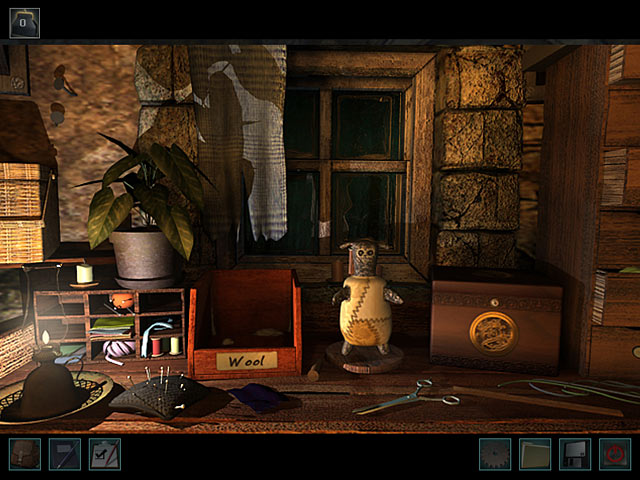

The "key" isn't something you put in your inventory, it's various bits of information that you piece together in your head (augmented notebook) and use at the proper time. Nancy Drew is a detective, and so you spend a lot of time in web searches, old books, scrawled notes and conversation just doing research. There's still plenty of that in The Curse of Blackmoor Manor (as well as literal keys and literal doors), but many more of the puzzles are information driven instead. The keys and doors concept is inventory driven: you collect things and use them with other things. But I've been struck at how little of that design I've encountered in The Curse of Blackmoor Manor. There's no knocking that approach: it's given me some of my favorite games ever. It leads to a flowchart style of design that dominates most of the adventure games I've ever played, from back in the 90s to today. I think of an old LucasArts quote: "It's all just keys and doors." The idea is that, on a basic level, all that weird stuff you're collecting is a key of one kind or another, and the weird stuff out in the world is a door of one kind or another.

What we've got here is not hard to recognize: it's a classic adventure game.Īnd yet something about this game feels different than others I've played recently. Everyone's got something to hide, there are rumors about "the beast of Blackmoor," there are doors covered in sliding tiles and a wealth of puzzles and stories packed into the several rooms you have access to.

The game so far is relatively contained, but swimming with depth as you poke your way through dusty corridors, secret passageways and a particularly garish main hall. After all, what else would she be doing there? It's first person with a screen-by-screen navigation reminiscent of Myst with a dose of Nancy's narration. The Curse of Blackmoor Manor begins with Nancy sent to a remote English country home and promptly assuming there's a deep mystery to be solved. There's a bundle for $80 on Steam, which I bought in moments.


 0 kommentar(er)
0 kommentar(er)
